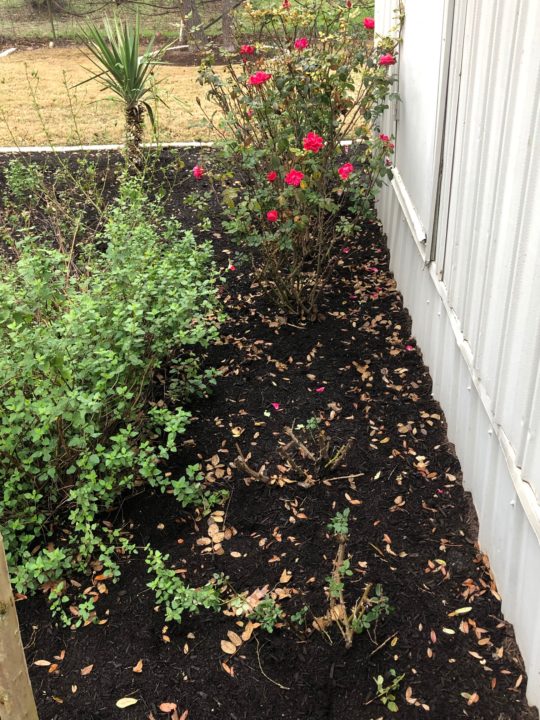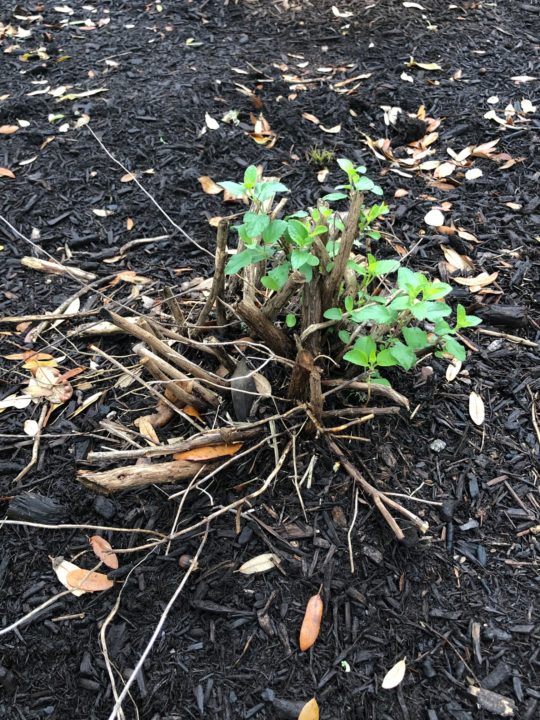Central Texas Winter Cut Back
How can you be successful in your Texas winter cut back? A little work in mid-late winter will result in a more beautiful and healthy landscape for the rest of the year. Each yard is different, in fact each yard can have its own microclimate where plants should be treated differently. We want to help give you some guidelines on how to treat your plants over the winter, but remember these aren’t hard and fast rules.
When should I complete my Texas winter cut back?
In central Texas, it is preferable to do this after the first hard freeze (typically in January).
But remember that this is seasonally dependent. There are some years in Central Texas that you will have a hard freeze in November. There are other years that it won’t freeze once. How do we define a “hard freeze”? Generally if it gets down to roughly 18 degrees Fahrenheit your plants will really start to feel it.
Caveat – micro-climates are real. What is a micro-climate? One area can have a very different response to the weather depending on environmental factors (sun, shade, proximity to water (thermal warming/cooling), exposure to wind, depth of soil, etc).
I was in a yard recently – a very nice yard on Lake Austin. They have tropical plants throughout the landscape – to include banana trees and palms. It was really interesting to see that the banana trees were each affected differently by a recent cold snap. The more exposed trees had more cold damage than the sheltered trees. The differences in the same yard to the same plants were stark. Also, the homeowner and I connected on the “fairy house” in the landscape because we both have daughters…and that’s what I talk about now that I have a daughter…fairy houses.
What do I do to each type of plant?
I have a great answer to this question…can you guess? Answer – it depends. It depends on the type of plant, the time of year, the goals for the landscape, the cold damage to date, and if the stars are currently aligned. I want to give you a little information on common plants found in Central Texas landscapes. This is obviously not all inclusive. But it should get you an “80% solution”.
 What do I do with my perennials?
What do I do with my perennials?
As a quick reminder, perennials are any plant that lives longer than two years. Examples of central Texas perennials include: Lantanas, Salvias, Turks Cap, Bird of Paradise, etc. Many perennials should be cut back aggressively –to the ground. See pictures.
Each cut back is dependent on plants’ specific micro-climate – meaning two lantanas could/should be treated differently. One could be protected from the wind and remains healthy all season, while another is exposed to the elements and dies back to the ground. Cut back the dead, woody parts. Even if the plant hasn’t died completely back (this happened to one of my lantanas each year), we would still recommend cutting it back close to the ground – it will result in a healthier and more beautiful plant the following year. A failure to cut back perennials will result in “leggy” plants with less blooms.
What do I do with my knockout roses?

Rose Cut Back
Roses should be cut back dramatically before Valentine’s Day (what a convenient way to remember it). Remember that blooming only occurs on new growth. This is why people will often prune their rose shrubs, proper pruning will result in a double stem and double the blooms. If no annual cutback on pruning is completed then there will only be blooming on the top / new growth. So be aggressive on the cut back!
The temptation is to under do it but the result is less blooms and a larger shrub. We often see over grown roses that are the result of years of under-pruning. In the picture on the right (taken at our office) you can see the very short stick-looking things in the fore-ground. These are roses cut back. The roses in the back are pre-cut back. As you can see it is aggressive and a bit scary at first to cut them back this far, but it is the right thing to do!
As a caveat (I like caveats), be careful on the very mature knockout roses. You want to leave a couple feet of stem minimum on a very mature rose shrub – otherwise you could kill it.
Other types of roses can be treated similarly, but there are whole books on how to treat roses. I would refer you to those resources.
What do I do with my decorative grasses?
Decorative grasses, not to include bi-colored iris or liriope, are the big, beautiful grasses that need a large and aggressive cut back. Without the right equipment this can be quite the chore. You want to cut these back to about 8 inches from the ground, otherwise the old, dead stalks will prohibit new growth and generally detract from the beauty of the grass the following season– cut it all back! It feels a little weird to chop 90% of the plant back, but you need to do it.
Side note: Crape Myrtle season is coming. We generally trim Crape Myrtles in February. More on this to come!
I got a lot of my info from my friends here at Top Choice but some of my thinking comes from this wonderful website: http://www.texasgardener.com/pastissues/janfeb08/Cleanup.html


 What do I do with my perennials?
What do I do with my perennials?